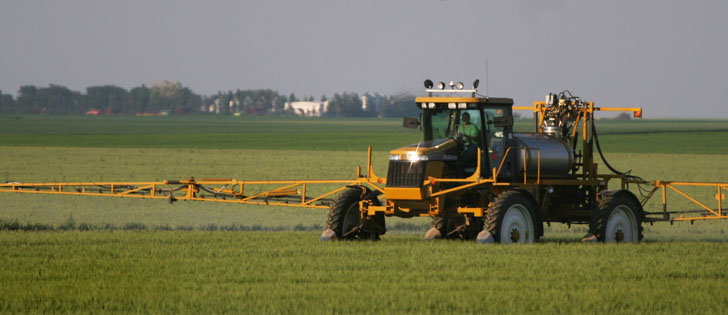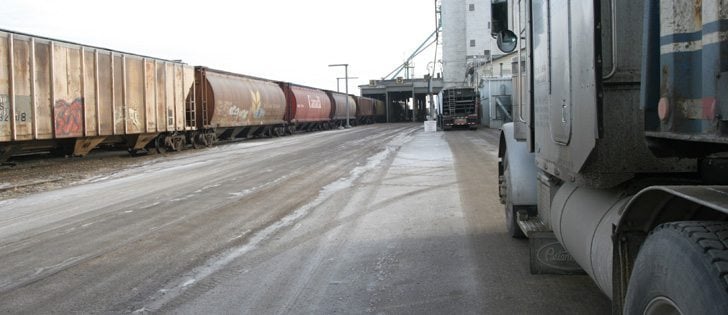There are strange things done in the midnight sun by folks who live in the Yukon.
But few are more strange than grazing the range and growing food north of 60.
Rick Tone, executive director of the Yukon Agricultural Association, says when most people think of Yukon, they think of a pristine wilderness area dotted with lakes, mountains, rivers and wildlife.
Few people know that territory is also home to a small number of agricultural producers who grow high quality food and forage crops, he added.
Read Also

Stacking Canada up on gene editing livestock
Canada may want to gauge how Argentina and other countries have approached gene editing in livestock and what that has meant for local innovation.
“Yukon is home to 160,000 caribou, 50,000 moose, 34,000 people, 17,000 bears and a variety of other species, including 148 farmers,” Tone said.
“We face a lot of challenges but perhaps the biggest challenge is lack of appreciation and support from everyone who eats food but doesn’t care about the welfare of farmers who grow it or whether it comes from Canada or Timbuktu, as long as it’s cheap.”
Yukon is a tough place for farmers to scratch out a living, but Tone said its producers are dedicated to their profession.
The territory is about three-quarters the size of Alberta, but only two percent of its land is considered suitable for agriculture.
Of that amount, only a small portion is used for farming.
Tone said the territory’s 148 farms occupy about 30,000 acres of deeded land, about one-third of which is cultivated.
The rest is used for primarily for grazing.
The majority of farms are located near the capital city of Whitehorse in the southwest, but other operations are scattered throughout the territory, including a handful in central Yukon, 500 kilometres north of Whitehorse.
“Surprisingly, general growing conditions are better (500 km north) because the soils are better and they receive 24 hours of full sunshine in the summer, which means they have a lot more heat units than we do in Whitehorse,” Tone said.
Frost free days
Whitehorse area farmers can normally expect 90 to 95 frost free days while producers further north can expect 100 to 105 frost free days.
The most common crops grown in the Yukon are forages.
The climate is generally cool and dry, so forage yields differ greatly between dryland and irrigated fields.
Brome, one of the more popular crops, averages three-quarters of a tonne per acre on dryland. Under irrigation, it will commonly yield four to five tonnes per acre with protein levels of 15 or 16 percent.
Cereals are grown but dryland yields are usually low.
Greenhouse production makes up the remainder of the territory’s crop, although Tone said one farmer is successfully growing apples near Dawson City and producers are trying corn.
Most of the hay produced in the Yukon is used within the territory to feed livestock.
Horses are used widely by outfitters, wilderness tour guides and residents who keep horses for backcountry transportation and recreational riding.
There are also commercial cattle farmers, elk producers and a bison farmer, but in most cases attempts to expand the territory’s livestock industry meet with strong opposition.
Even farmers who grow crops face constant pressure from environmentalists and residents who view agriculture as an unwelcome industry.
“Most Yukoners place a very high value on Yukon’s natural environment and on its protection,” Tone said.
“Environmental groups and many citizens oppose farmers because they are regarded as being harmful to water resources and detrimental to wildlife because they take away valuable habitat…. Even hunters, fishermen and outdoor recreational users don’t like farmers because they regard farmers and their fences as obstacles to wilderness access.”
Logistical issues and a lack of infrastructure are also major hurdles.
Tone said there are good markets for locally grown livestock, food and forages, but input costs are high, transportation costs are prohibitive, experienced farm labour is in short supply and land purchases are often hard to finance.
Road access is often the only way to transport bulk goods in and out of the region.
The territory has little or no processing capacity, cold storage facilities are limited and farm service centres that provide crop inputs and machinery parts are non-existent.
Producers must source their own fertilizers, arrange transportation and store it in a handful of privately owned bins until it is ready to use, Tone said.
For farmers in the Whitehorse area, the closest farm service centre is 1,000 kilometres away in Fort St. John, B.C. As a result, Tone said, producers in the Yukon are forced to be resourceful and have learned to band together to meet common needs.
They also place a high value on producing nutritious, high quality food for the territory’s residents.
Few Yukon farmers are able to make their entire living from farming. Tone said most are part-time farmers and require at least one other job to support their farms.
“But everything that Yukon farmers produce is sold, most of it at the farm-gate and often in advance.”
In 2005, total farm receipts in the Yukon were $4 million.















